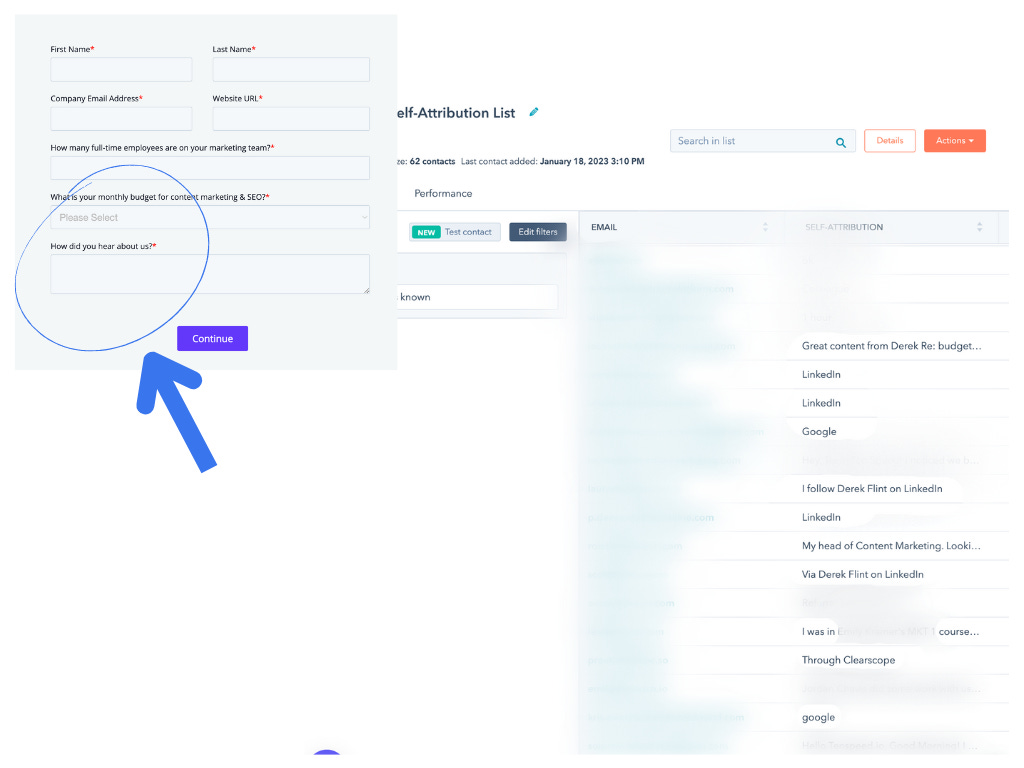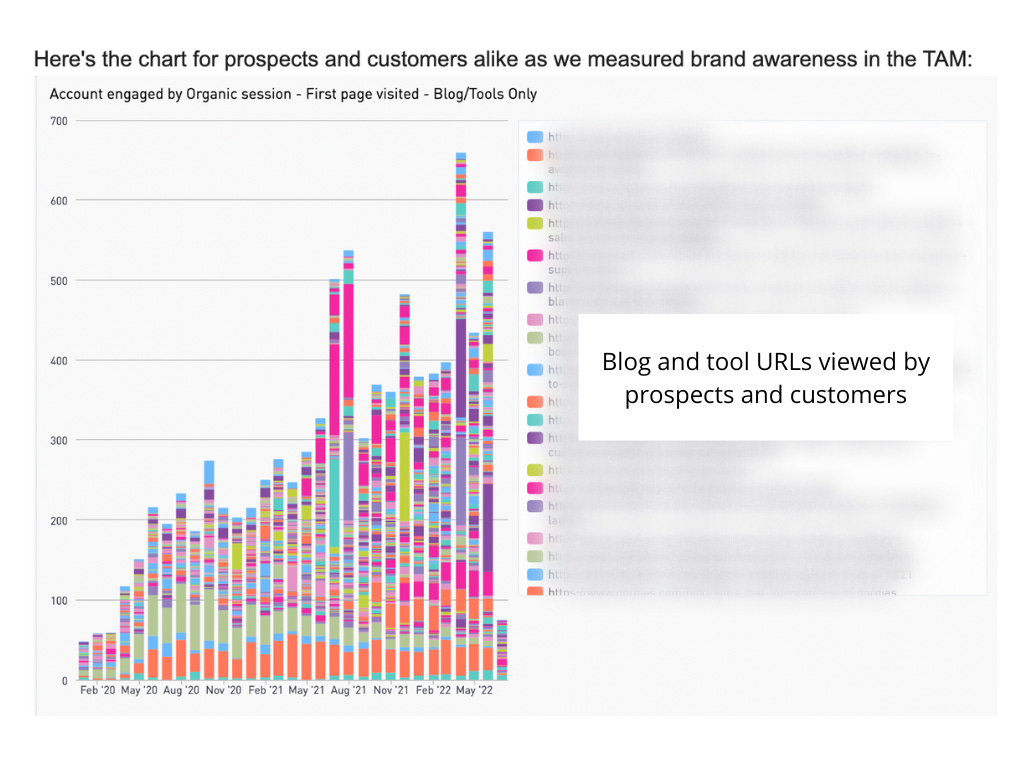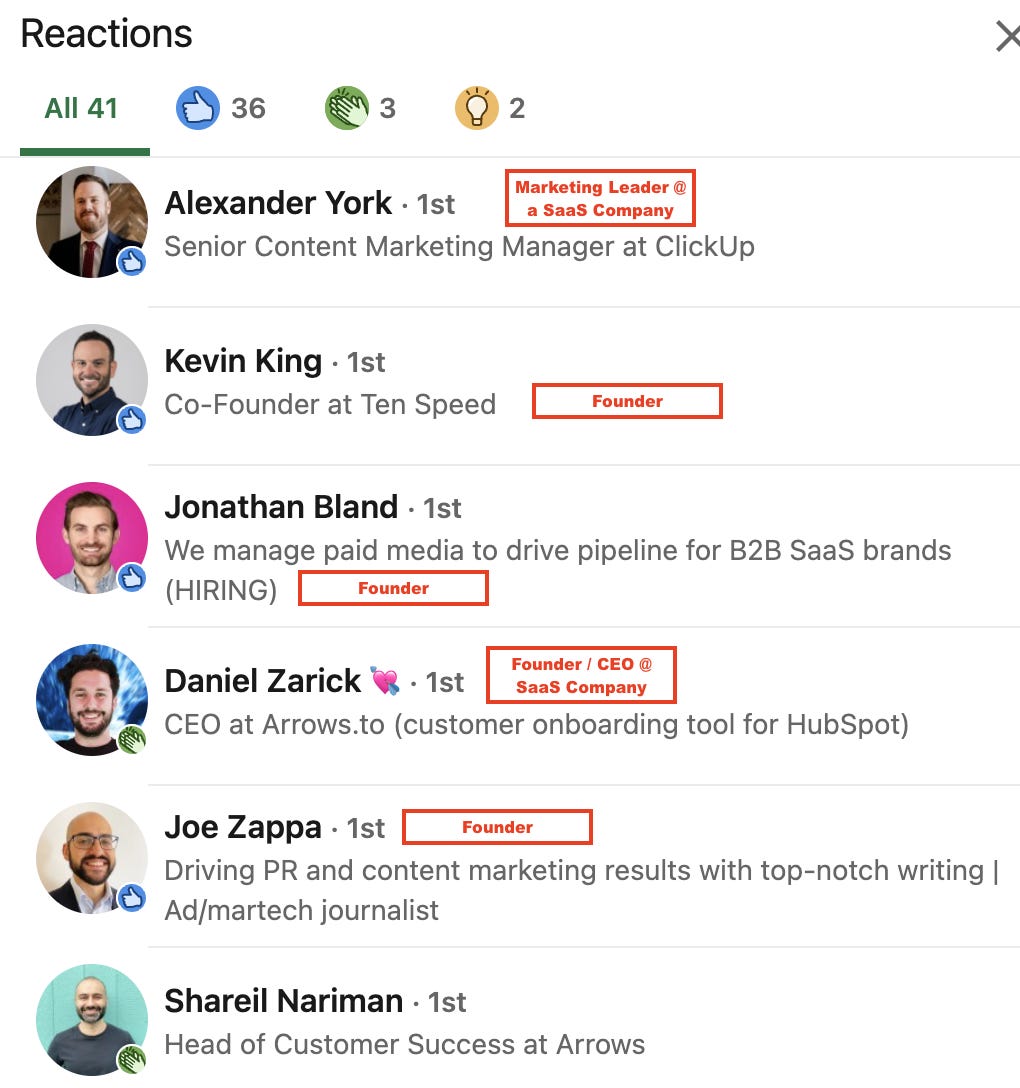Traffic is growing, but WHO is looking at your content?
Let's discuss tools and tips to make sure you're reaching the RIGHT audience.
Hey all,
Welcome back to the monthly newsletter, where we share tactical insights that content marketers can use to improve their overall marketing impact at their companies.
This month we’re tackling the question:
What are some ways that marketers can see if their content is reaching the right people?
As much as we all enjoy the directional data provided by metrics like impressions, clicks, or number of engagements, we want to know if those numbers are growing amongst the people we value the most.
So here are 5 examples that you can use to understand if your content is attracting the right crowd:
1. Try the Clearbit Weekly Visitor Report
This free report comes every Friday morning and is FREE - all you have to do is create an account, install the script, and wait for Friday.
Important information you’ll receive includes:
Specific company names
Company size
Industry
Number of page views
Specific pages they viewed on your website, including the content pages
Quick access to their social media pages and website for further prospecting
It’s an extraordinarily helpful snapshot that you can show your leadership team to say, look at the companies that match our ICP who viewed our content.
And you can use this information to support your sales team and your paid ads team as they look to build audiences and retarget folks who show signs of higher intent.
2. Get creative within HubSpot
You’ve likely noticed that once you’ve established someone within your contacts in HubSpot, you can see what pages they visit on your website.
If you’d like to get an idea of exactly what those people looked at first or which pieces of content attracted which accounts, all you need to do is click on their contact activity and look at how they navigated through your website.
You can also use either of the two filters for lists:
"First page seen" or "last page seen" can be a workaround if you have the lower tier subscription for HubSpot.
Marketing Pro subscribers can create lists based on "contact has visited exact URL"
Here is a helpful thread on how to generate these lists.
3. Forms with the field "How did you first hear about us?"
For a content marketer, you’re looking for any references to content and channels that’ll help you identify what’s influencing the people that were willing to turn over their email addresses and become a contact.
You’ve likely heard about this tactic from the loudest of the loud demand generation people on social, and it’s good advice.
You’ll get the following:
The channel that influenced them
The reason why
And their email will often tell you which company they work for
4. Some of our clients use and love Dreamdata.io
This tool can be a considerable investment and requires setup, but its power to illustrate attribution for marketers is leading to its growth in popularity.
A few that’ll help you as a content marketer is the ability to see:
Number of influenced leads from specific content URLs
Number of Influenced leads from specific channels for your content
Influenced value from your content both in revenue opportunities created and closed-won
Which and how many target accounts viewed which pieces of content
This tool has helped prove that our SEO-focused content is being read by hundreds of target accounts for our B2B SaaS clients and even reports on the millions of closed-won revenue the content has influenced.
That makes us proud of our work and gives the in-house content managers budget increases and promotions.
5. Ask sales, success, and support folks to use and report their use of content
Great content helps close deals faster, helps a customer use your product in a specific way, and answers general questions about your product.
If you’re teaming up cross-functionally to create these types of content assets, which you ought to be, create a system for those teams to record when and which piece of content was used with a prospect or customer.
6. Look at the titles and companies of your social engagements
You’ll get a sense of the audience you’re building with your content by looking at several key insights, especially on a platform as job focused as LinkedIn.
A pretty quick glance at the following will tell you how you’re doing at creating the right type and level of content:
Work titles engaging with individual posts
Company names engaging with individual posts
Titles and names following you or your brand account
If there are multiple accounts (personal, co-workers, and brand) you can use these to target different levels of professionals within your industry to ensure your reach is expanded across department and management levels at your ICPs.
Who is your content attracting?
This list gives you a lot of options for getting a read on who is looking at your content whether you’re trying to have a full view of your buyer journey that’s integrated across your tech stack, or you simply need to do a quick, occasional check to make sure you’re still on the right track.
Has your team found other convenient ways or tools that allow you to identify who is looking at your content?
Related + New Resources For Your Team
[Read 📖] Using Ideal Customer Profiles (ICPs) To Improve Your Content Marketing's Efficacy
When you have a clear, detailed ICP your marketing efforts will feel less like you’re using a megaphone 📣 — speaking the exact same way to your entire audience — and more like a compelling, one-to-one message for your highest-value prospects.
Take me to this resource -->
[Read 📖] How to Choose Content Marketing Topics That Will Grow People's Interest in Your SaaS Company
In this article, we’ll walk you through how our strategists and content marketers think about the "what" and "when" of choosing certain content topics.
Take me to this resource -->
[Watch/Listen 👁️👂] Finding Your ICP to Build Better Content
This episode is packed full of advice from which internal teams/departments likely have the most information to help your marketing department understand customers to using the Jobs To Be Done framework to understand their "pain points.
Take me to this resource -->
[Watch/Listen 👁️👂] How to Measure Content Distribution to Prove It's Working
Nate and Kevin cover tools, forecasting distribution results, vanity metrics, and what measurements teams can use to validate that their strategy is working.
Take me to this resource -->






